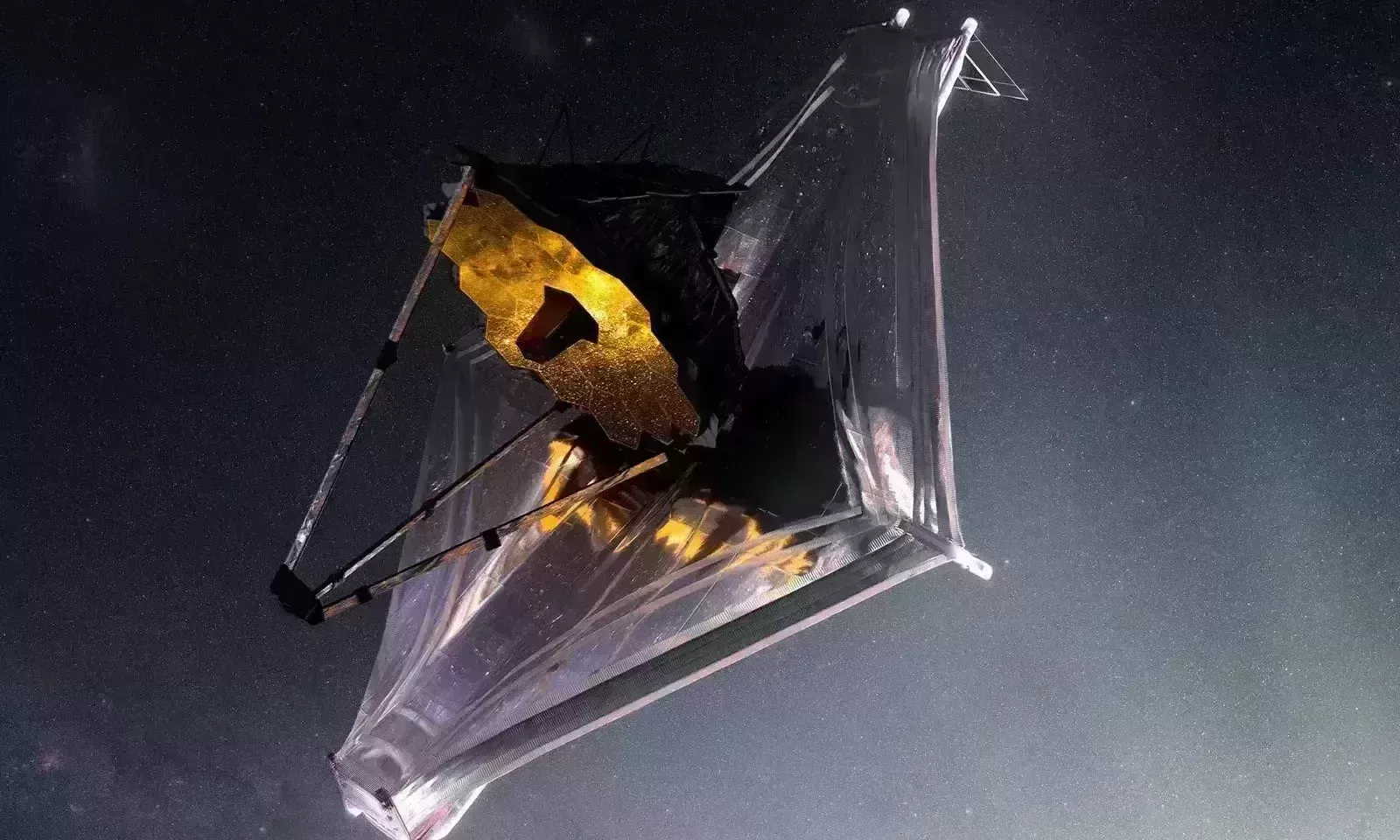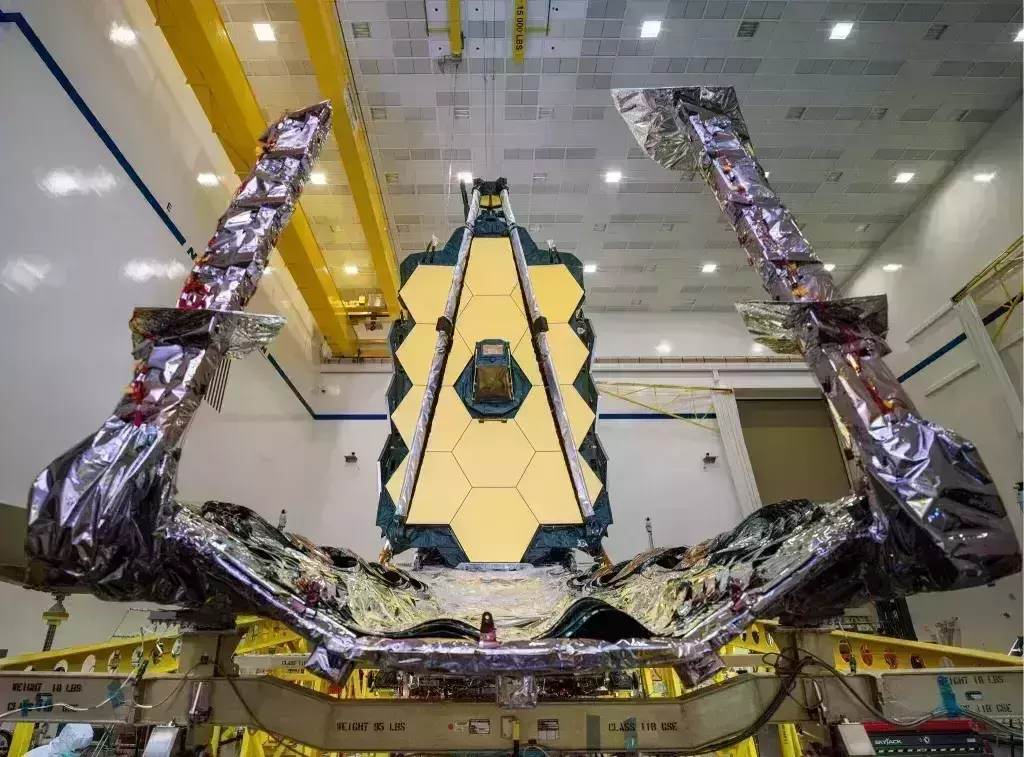
Glimpses of cosmic dawn offered by James Webb
text_fieldsJames Webb Telescope.
The history of Cosmology can be divided into two, before and after the telescope. It can be said that a new era in astronomy began when a scientist named Galileo Galilei observed the sky with a telescope four centuries ago. Until then, only observations and hypotheses based on them within the limitations of the naked eye were possible. Galileo, who saw the moons of Jupiter and the phases of Venus through a telescope, was presenting great clues to the vastness of the universe. What helped him in that was a small telescope! The telescope has always been a guide to man's quest for the vastness of the universe. Along with the growth of that discipline, the telescope has also undergone morphological and technological evolutions. The concept of simply observing distant spherical objects in the wavelengths of visible light has changed way before. There are telescopes currently operating in space that enable observation of the universe in infrared, X-ray, and ultraviolet wavelengths that humans can never see.
We now know about the Hubble telescope, which has been orbiting the sky for three decades; The knowledge given to the scientific world by the images taken by Hubble is expanding just like this universe. The James Webb Telescope is a space telescope that can roughly be termed the Hubble's successor. This telescope has created history with the very first images it took. The world of science believes that the James Webb Telescope will be able to develop cosmology to new levels. The James Webb Telescope, which observes cosmic objects at infrared wavelengths, was launched on December 25 last year. This was a project developed by the American space research agency NASA in the late 1990s. Dubbed the 'Next Generation Telescope', the project got dragged on for several reasons; it was in 2002 that the telescope got named after James Webb, former director of NASA. Later, the European Space Agency and the Canadian Space Agency became part of James Webb. Though it was announced that it would be launched in 2016, it had to wait another five years due to technical reasons. NASA released five images taken by the telescope located in the L2 orbit, 15 lakh kilometres from Earth. Must be to show they are infallible in the project, the 'release' was carried out by US President Joe Biden.
However, all those images contained very important information for astronomers; In a sense, information inaccessible to the scientific world all this time! The first image captured by James Webb is of the galaxy cluster 'SMACS J 0723' in the constellation Volans in the Southern Hemisphere. This galactic community, bound together by gravity, is already within the surveillance of the scientific world. This galaxy cluster has been subjected to studies to find out how the formation of galaxies happened after the origin of the universe. This picture is a major breakthrough in that quest. The cluster is 512 crore light-years away from Earth. In other words, the telescope captures the light waves emitted during the galaxy formation period, after the birth of the universe. That means we are seeing some glimpses of Genesis itself through those pictures. In this way, we can expect to gain new knowledge about the Big Bang.
There are other images too that have been captured by James Webb: of the Carina Nebula and the Stephan's Quintet, a group of five galaxies. These images are capable of shedding light on cosmic expansion and evolution. James Webb has also sent a picture of an extra-terrestrial planet (WASP 96b) 1100 light-years from Earth. All of these images offer great potential in spectroscopy. It should be assumed that the spectroscopy of these images will provide clear indications regarding the structure of all the above-mentioned cosmic objects and the substances contained in them. Already, it is concluded that WASP 96b has the presence of water particles which is a pointer to biological presence in the extraterrestrial world. One of the most important areas of James Webb's research is extraterrestrial life. In short, the birth and death of stars and the evolution of galaxies in this ever-expanding universe are captured in a single frame with a device measuring only 25 square meters. More miracles could be expected from James Webb.


























